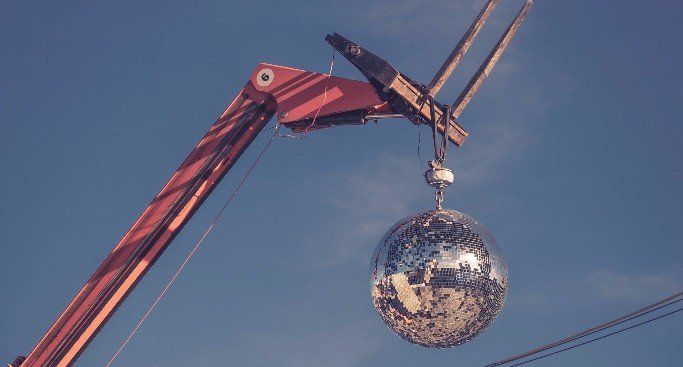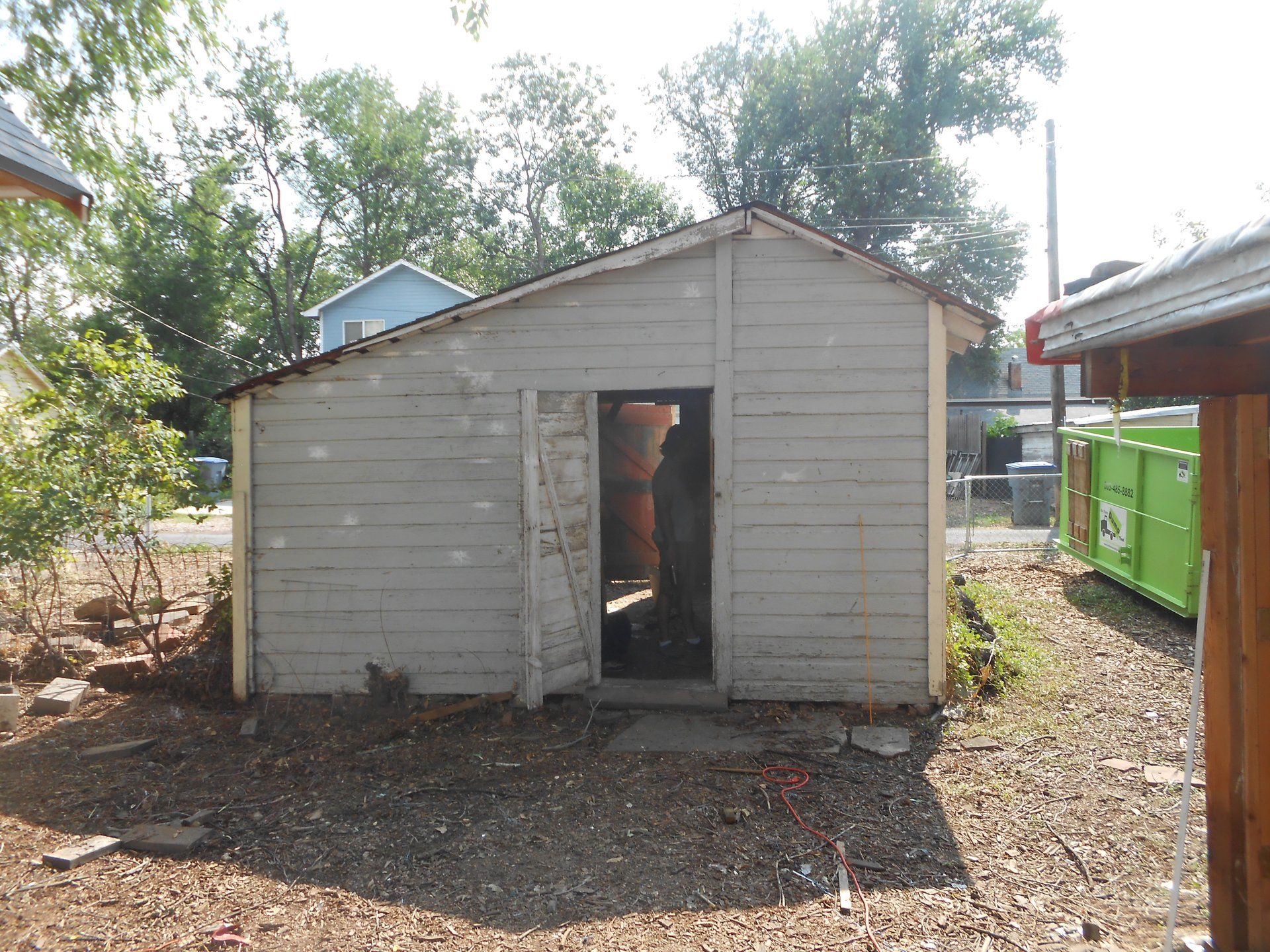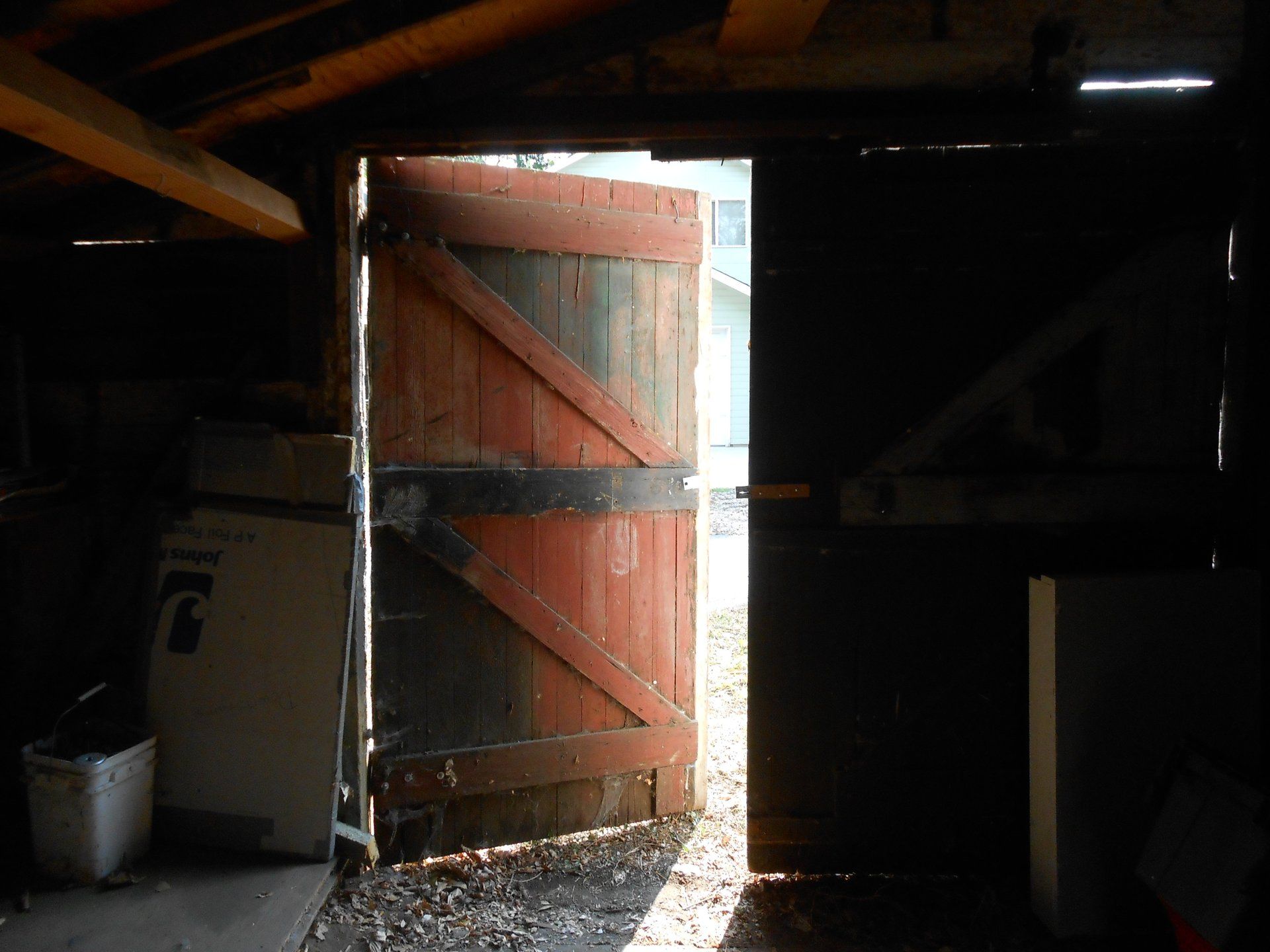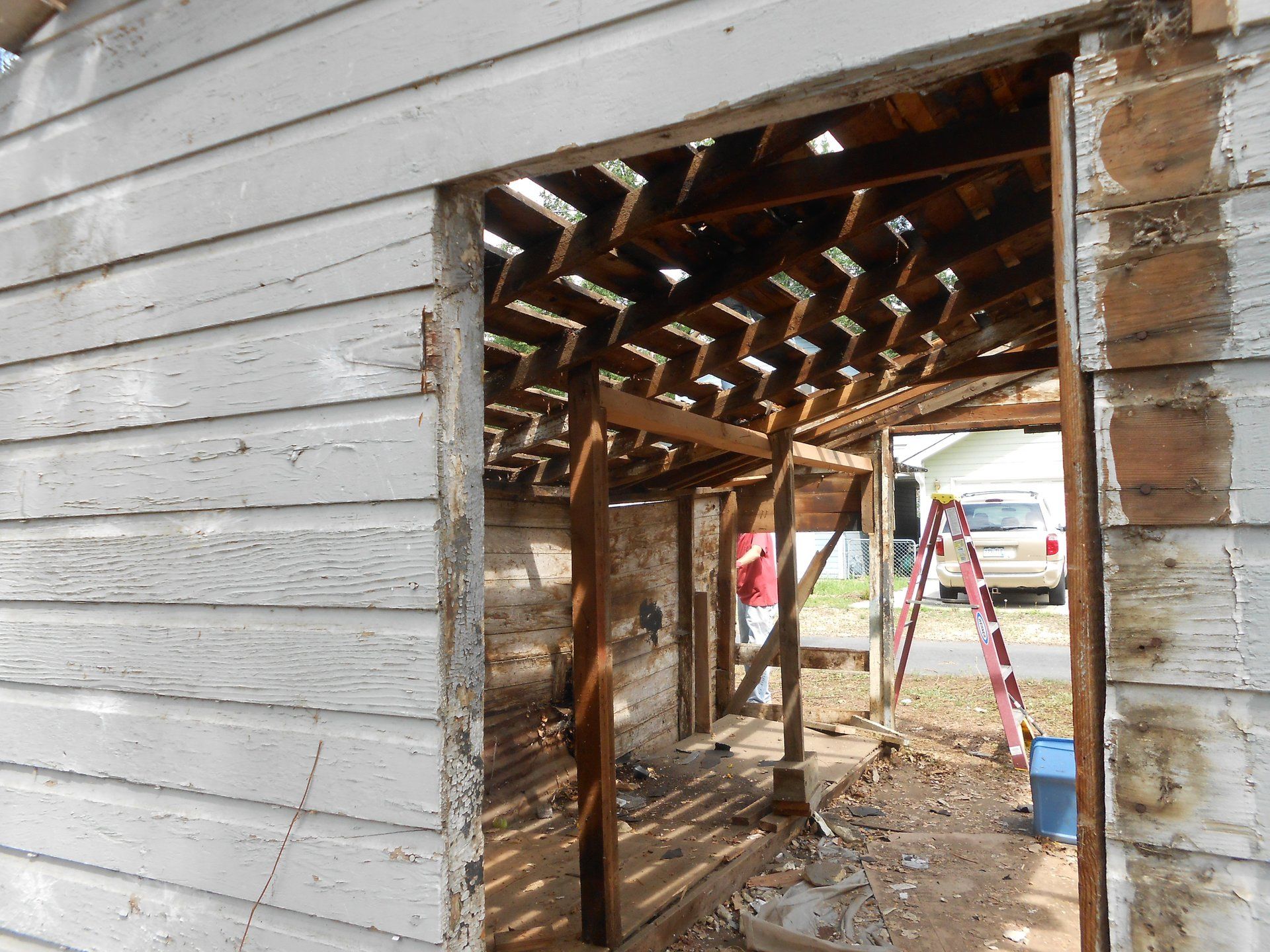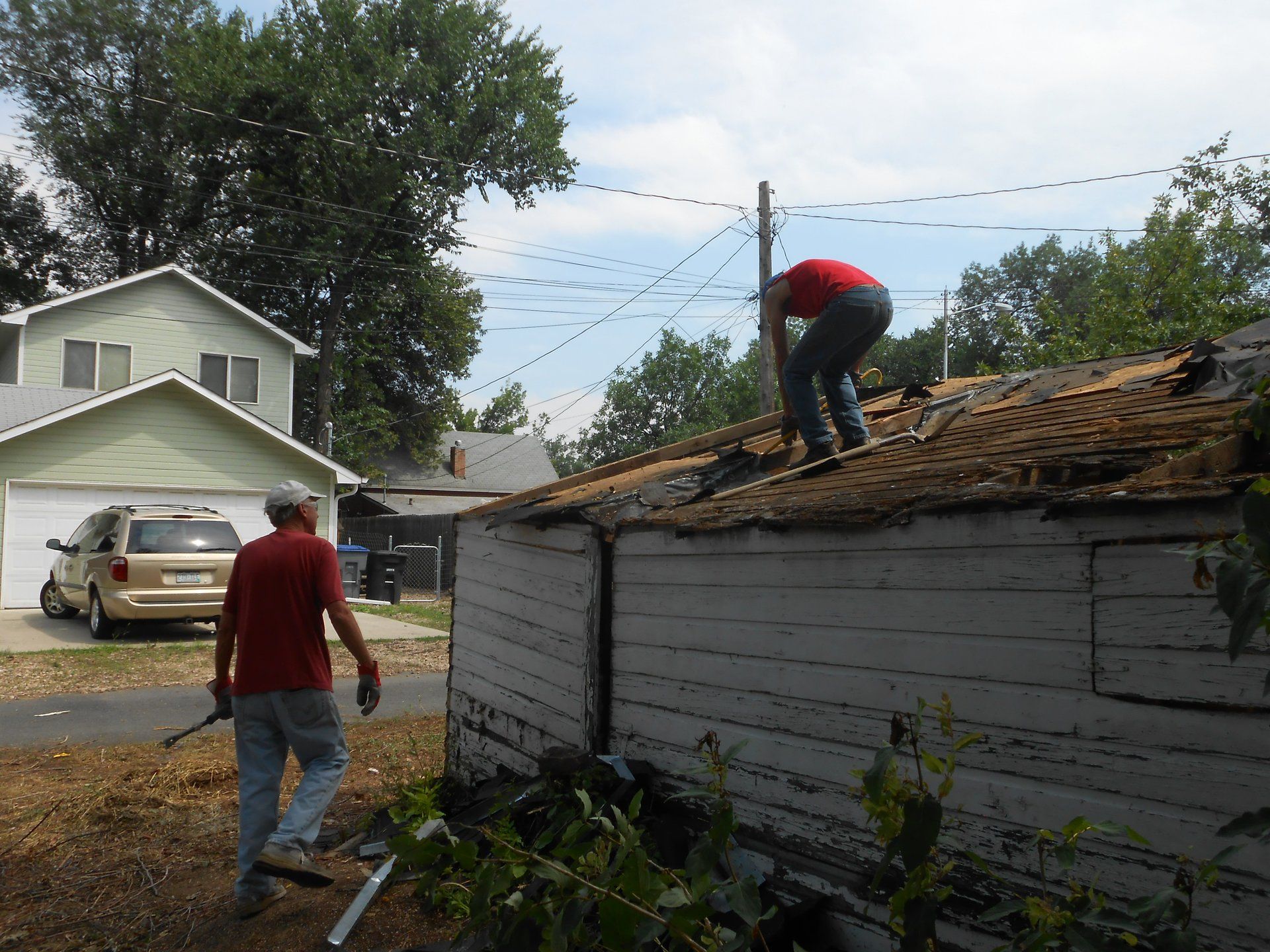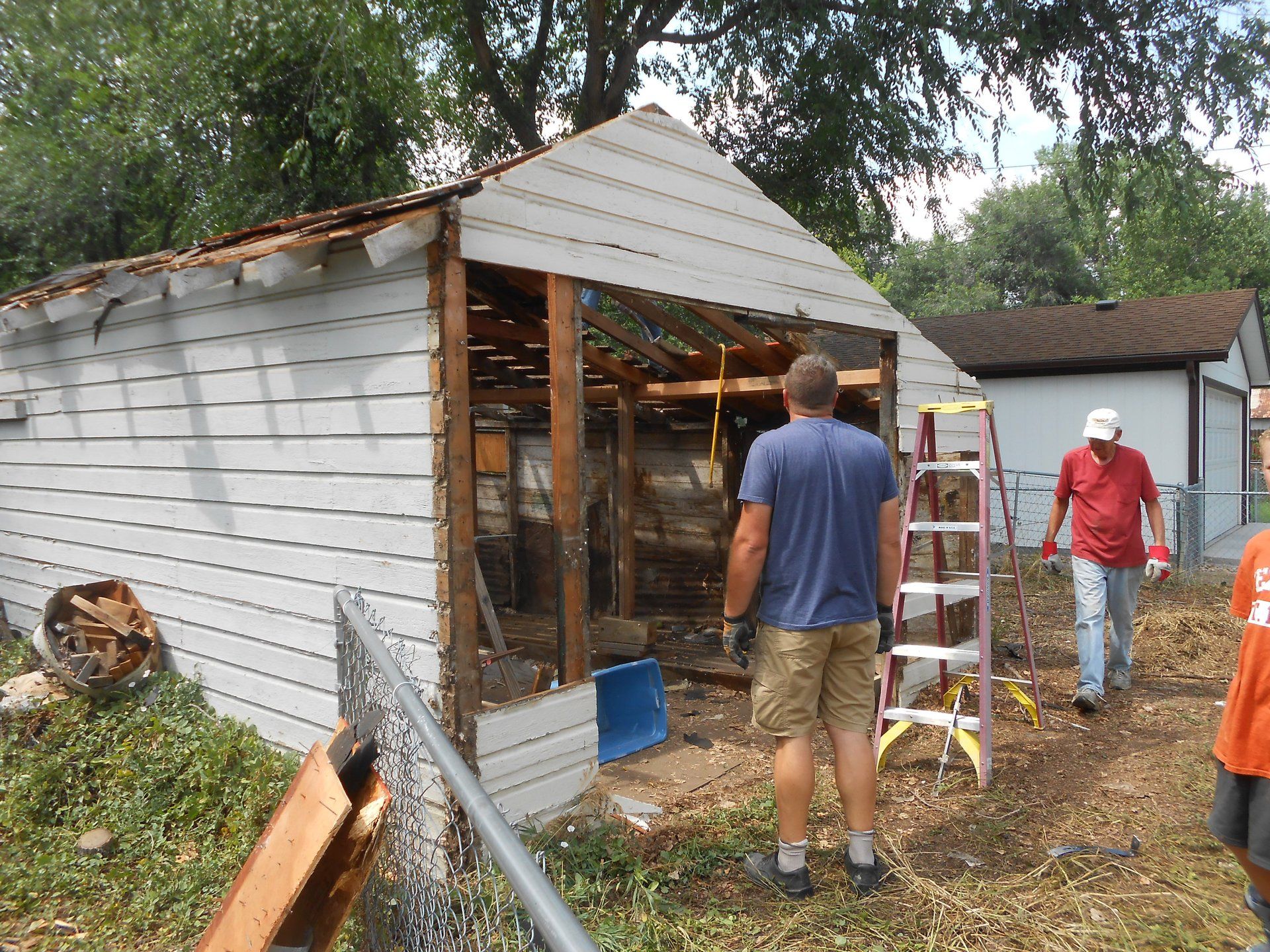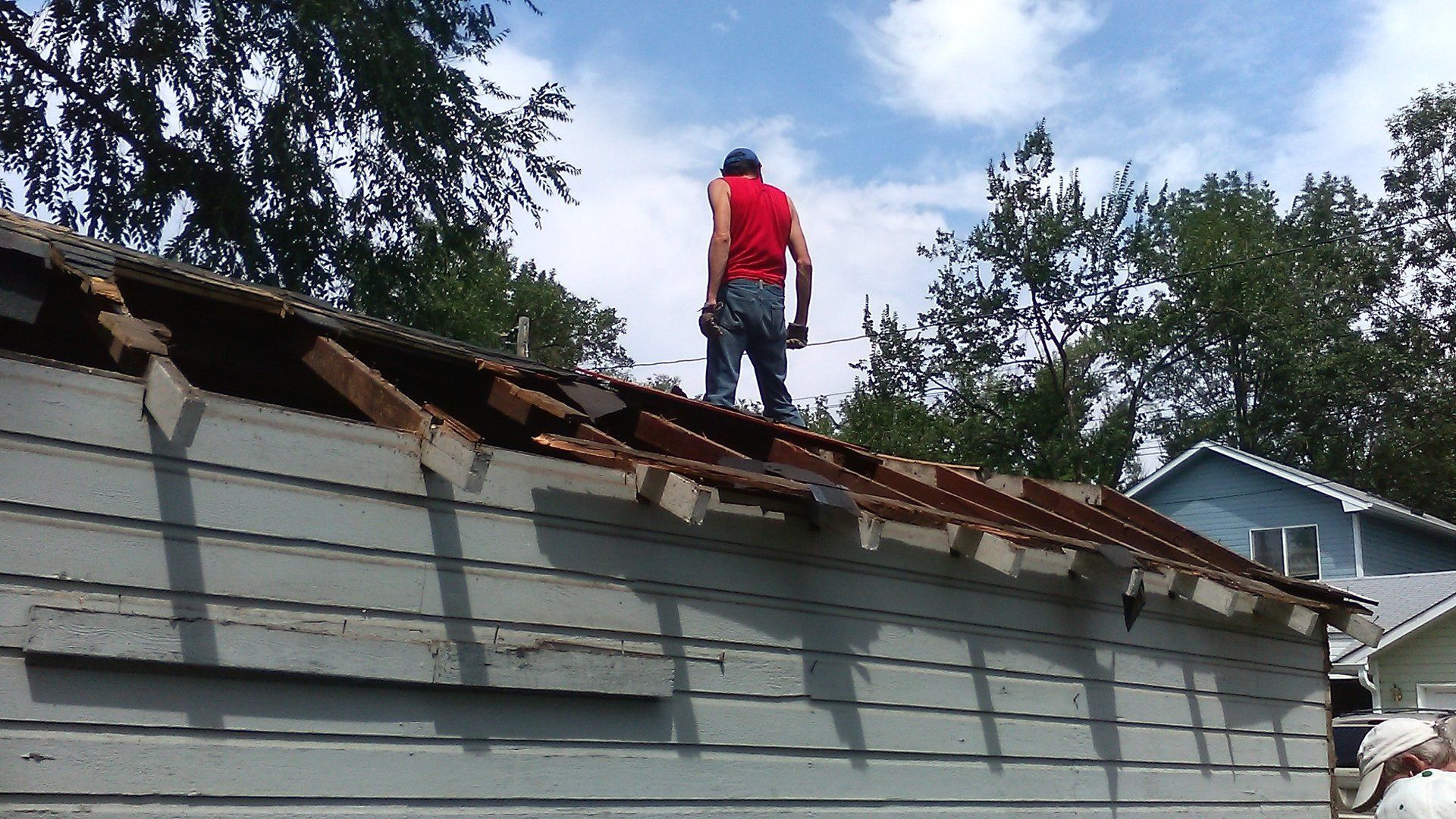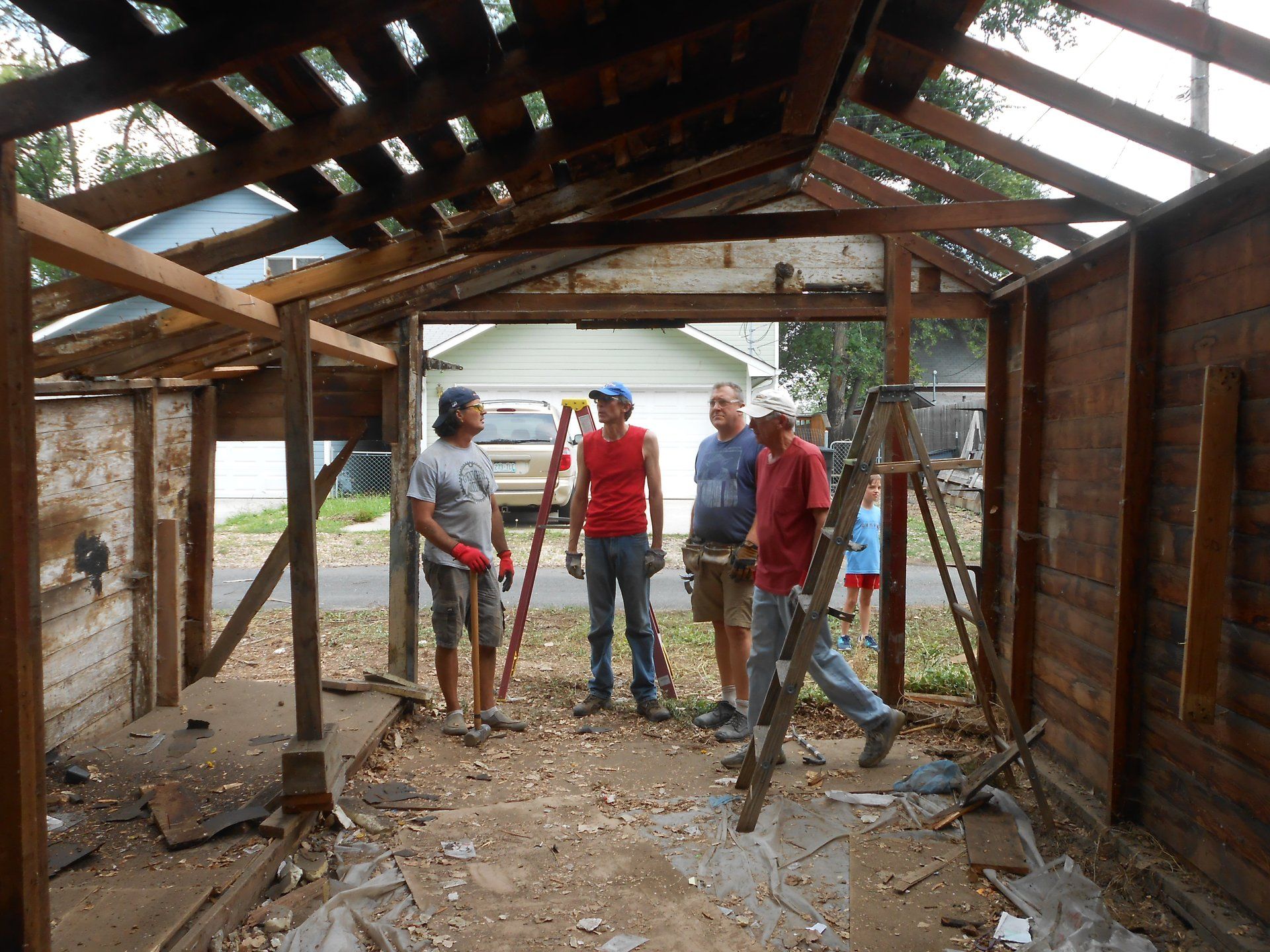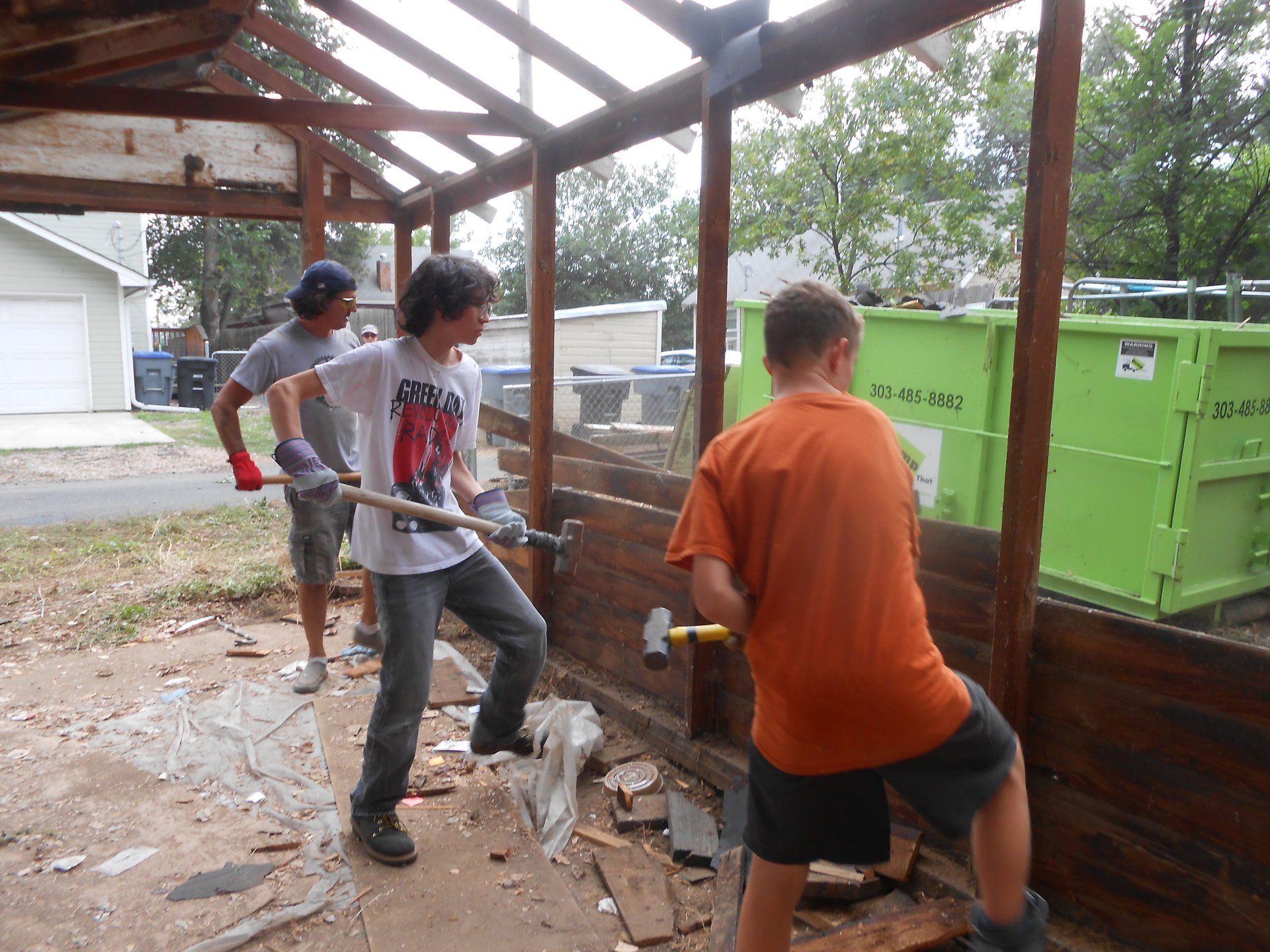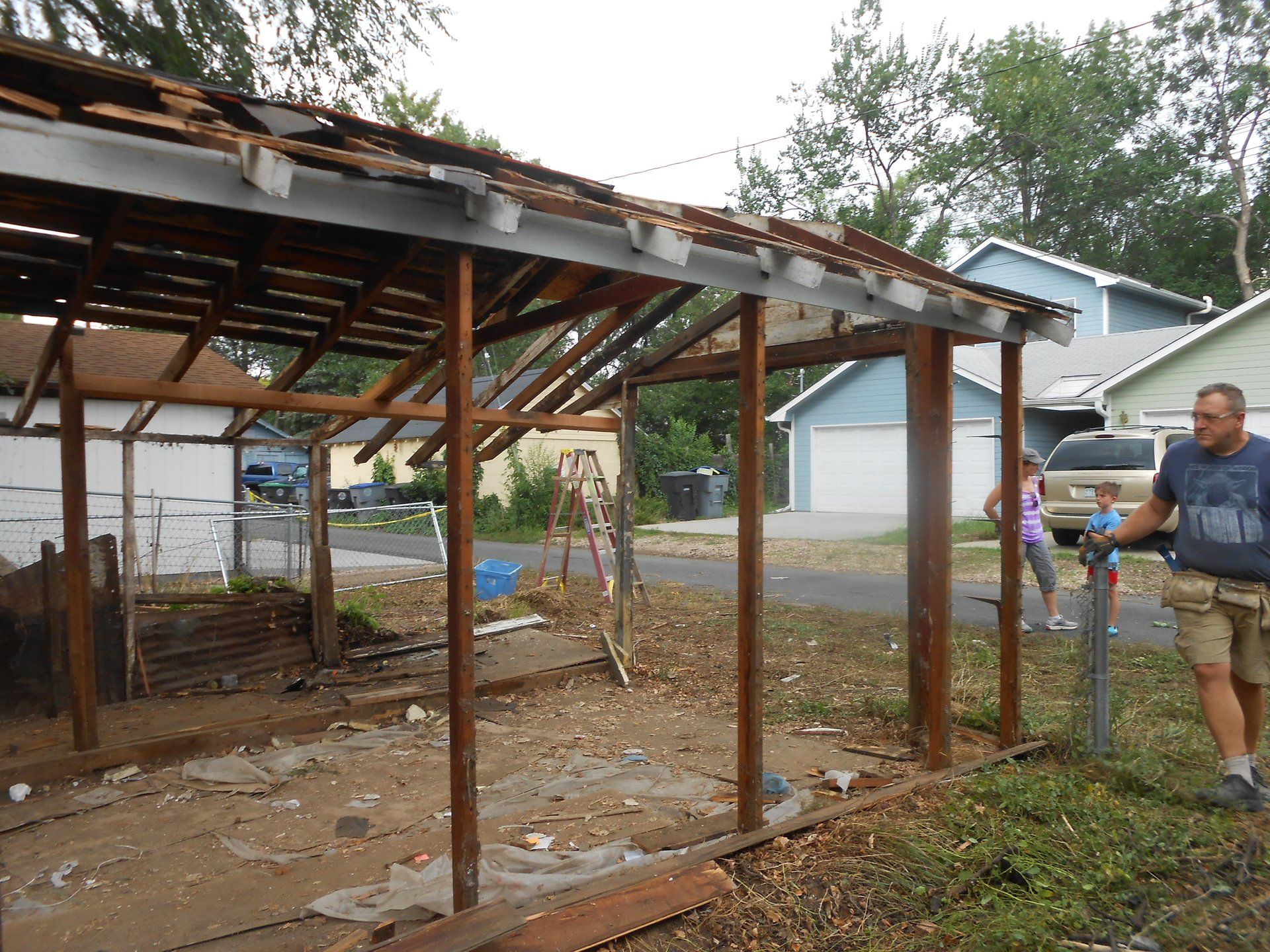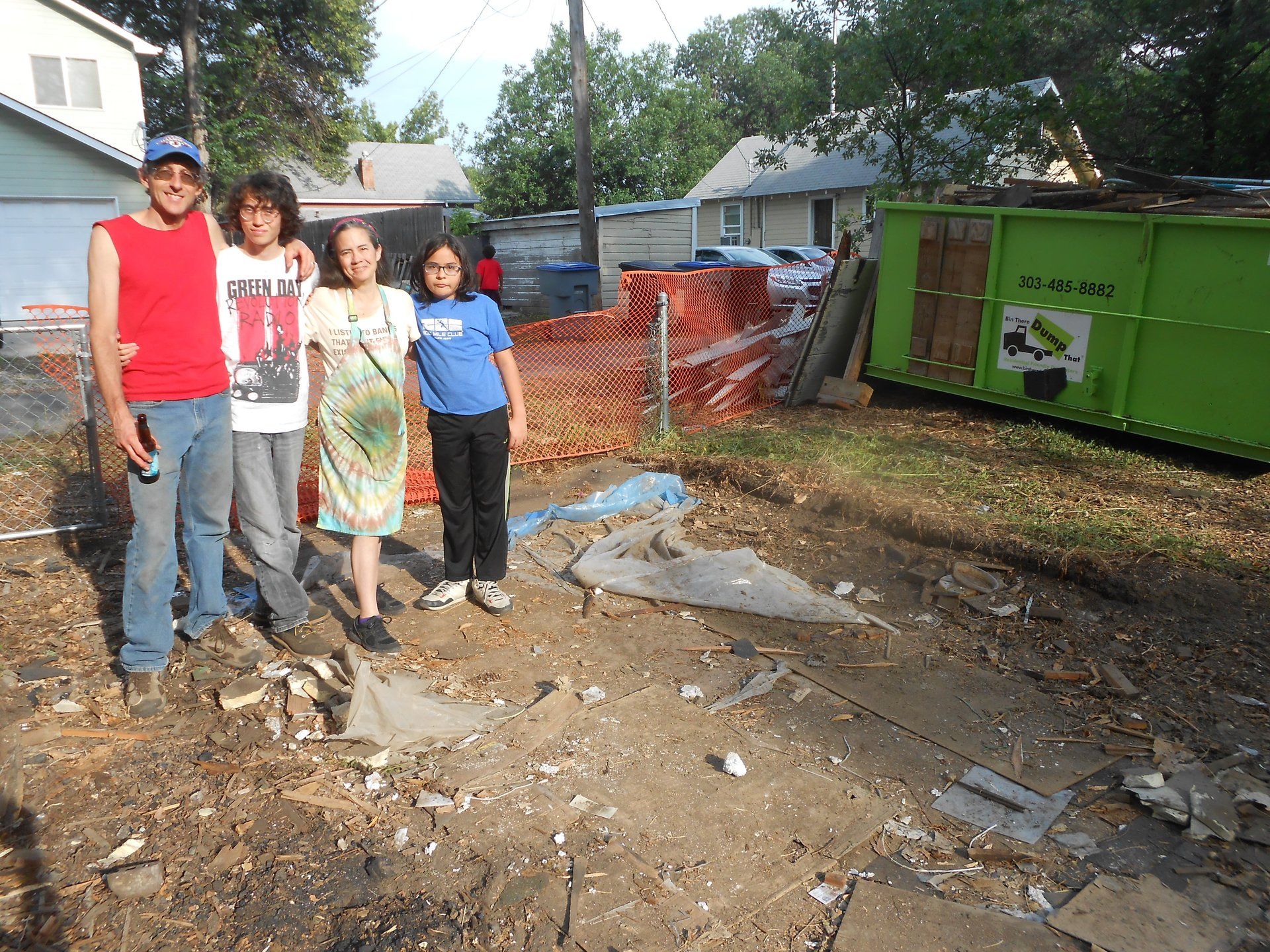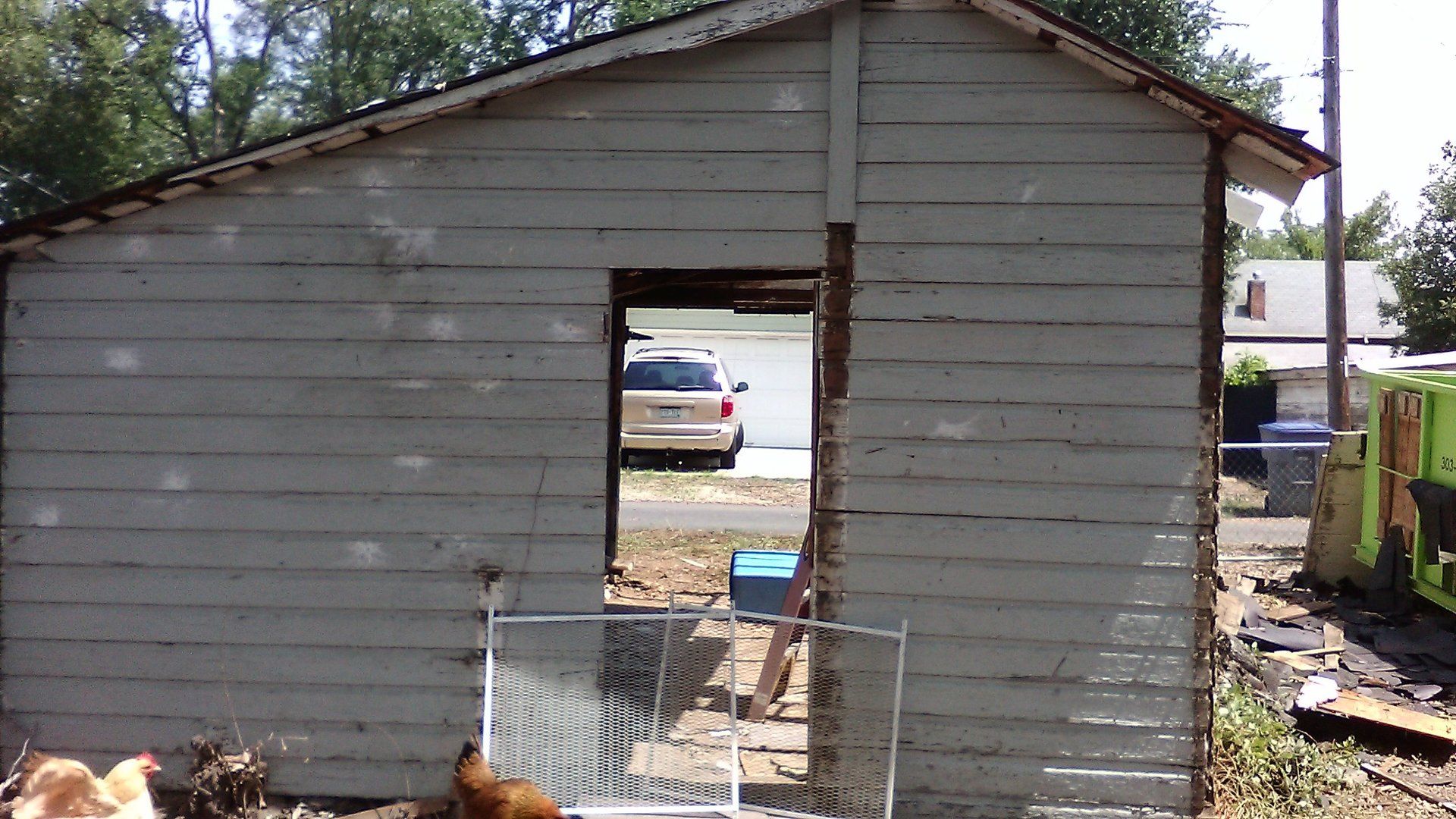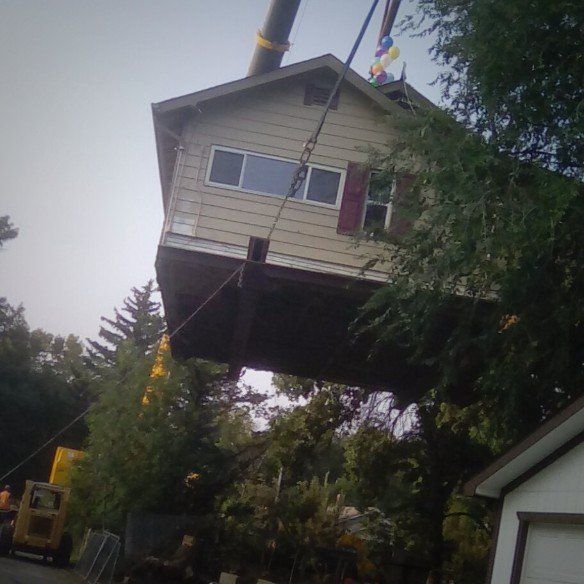
My, my, my, I've been seriously remiss in my updates ... well, the lack thereof. Things have been incredibly chaotic, and no sooner would I write a new post, then I would have to start all over because everything changed. But now, now
I have something that won't be changing.
Our "new" house was delivered! It all started at about 2:30 a.m., when the house was hitched onto the moving truck and, accompanied by police cars and several utilities' cherry-pickers. slowly made its way from 17th St. to 9th Ave, arriving a little before 4:30. Traffic control was all ready, with cones delineating the temporary lanes and the crane and truck zone. Longmont Power Company took down the power service line, NextLight took down the fiber optic line, and the crane and the house were joined by steel I-beams, chains, and giant spacer bars.
You'll see a few pictures in the picture gallery and slide show, but I'll add more as people send them to me. You can also see a lot at the Times-Call's website, where you'll find an article with the story, some photos, and a nice video summary.
There's also a slide show with more photos.
Our "new" house was delivered! It all started at about 2:30 a.m., when the house was hitched onto the moving truck and, accompanied by police cars and several utilities' cherry-pickers. slowly made its way from 17th St. to 9th Ave, arriving a little before 4:30. Traffic control was all ready, with cones delineating the temporary lanes and the crane and truck zone. Longmont Power Company took down the power service line, NextLight took down the fiber optic line, and the crane and the house were joined by steel I-beams, chains, and giant spacer bars.
You'll see a few pictures in the picture gallery and slide show, but I'll add more as people send them to me. You can also see a lot at the Times-Call's website, where you'll find an article with the story, some photos, and a nice video summary.
There's also a slide show with more photos.

So, no foolin' around: how much will this cost, and how do we plan to pay for it? I'll cover ROI in another post.
I'll start with how much, put how we'll cover it in the middle, and end with a rounded-off budget breakdown.
We're using the cash we've saved and a HELOC to front the money until the construction loan process is finished. We're also approaching family and promoting our GoFundMe campaign (for loans, not donations). We'll be doing a lot of the labor ourselves, which will keep costs down. That's not the primary reason we're doing that, though. This is a meaningful hands-on family project, investing our own time and effort into making a better home. Ken and I really enjoy doing projects together. We're a pretty good team, and we think doing stuff like this strengthens our bond with each other. We think it will be good for the boys, too, far beyond the time they are out on their own.
We've pulled together most of what we need for the first stage - specifically, prepping the space and moving the house. We need another $6000 to cover the "moving the house" stage, and, among other things, we're running a crowdfunding campaign here: https://www.gofundme.com/recycle-a-house.
We aren't actually asking for donations; we're asking for loans, and offering 10% APR on top of the loan amount. If you'd like to contribute, please feel free! If you want to give us a check or cash, that would save us some fees. GoFundMe allows us to add direct contributions to the amount we've received, without penalty.
Why not a bank?
Oh, there will be a bank! We are applying for a construction loan. Unfortunately, the process takes a while and the house would be demolished before the loan gets to our bank account. From what I understand, it could be a couple of months before that happens. That's why we're using the HELOC and the loans from friends and family via GoFundMe in the interim.
What does our budget cover?
I'm breaking this down using the sequence of events, because that's the easiest way for me to remember everything. The numbers I'm using are informed estimates, but we both think they're pretty close to the what the actuals will be. If you don't want to read through all the details, just scroll down to the end of this post to see the estimated total budget. It really helps that Ken has so much experience with construction - he has a pretty good handle on all of this.
Acquiring the house to be moved, and other preparation:
That's what has to be done in order to get our Certificate of Occupancy. We have a line item of $15K as a contingency reserve, because, you know, construction.
So we're figuring the total cost to qualify for the certificate will be around $100,000 or a bit less. We'll need more down the line, to take care of some upgrades we'd like to make, but this will get us living in the new house and renting the original part of the house. Which leads me toward ROI, which, as I mentioned, I'll cover in another post. This one's too long, as it is.
I'll start with how much, put how we'll cover it in the middle, and end with a rounded-off budget breakdown.
We're using the cash we've saved and a HELOC to front the money until the construction loan process is finished. We're also approaching family and promoting our GoFundMe campaign (for loans, not donations). We'll be doing a lot of the labor ourselves, which will keep costs down. That's not the primary reason we're doing that, though. This is a meaningful hands-on family project, investing our own time and effort into making a better home. Ken and I really enjoy doing projects together. We're a pretty good team, and we think doing stuff like this strengthens our bond with each other. We think it will be good for the boys, too, far beyond the time they are out on their own.
We've pulled together most of what we need for the first stage - specifically, prepping the space and moving the house. We need another $6000 to cover the "moving the house" stage, and, among other things, we're running a crowdfunding campaign here: https://www.gofundme.com/recycle-a-house.
We aren't actually asking for donations; we're asking for loans, and offering 10% APR on top of the loan amount. If you'd like to contribute, please feel free! If you want to give us a check or cash, that would save us some fees. GoFundMe allows us to add direct contributions to the amount we've received, without penalty.
Why not a bank?
Oh, there will be a bank! We are applying for a construction loan. Unfortunately, the process takes a while and the house would be demolished before the loan gets to our bank account. From what I understand, it could be a couple of months before that happens. That's why we're using the HELOC and the loans from friends and family via GoFundMe in the interim.
What does our budget cover?
I'm breaking this down using the sequence of events, because that's the easiest way for me to remember everything. The numbers I'm using are informed estimates, but we both think they're pretty close to the what the actuals will be. If you don't want to read through all the details, just scroll down to the end of this post to see the estimated total budget. It really helps that Ken has so much experience with construction - he has a pretty good handle on all of this.
Acquiring the house to be moved, and other preparation:
- $0.00 - the owner has given the house to us, with the stipulation that it be moved from its present location no later than August 8th.
- $500 - Official survey for the city, as part of getting the permits.
- $500 - Permit for the studio foundation.
- $1700 - Cutting down one big tree, several "surprise" saplings, and trimming a big branch off another tree. This has been done.
- $0.00 - Emptying the old horse barn. That's done, too.
- $50 to $100 - Tearing down the old horse barn. For that, we're going to have a Barn RazingDIY party. As soon as we've set a date, y'all are invited! Bring some tools of destruction! We'll have some beer and stuff after we're done using the tools of destruction, but we'll also make sure to have some tasty ways to hydrate and feed your body as we work.
- $2000 - Getting the studio building and chicken coop moved to more convenient spots in the back yard.
- $15,000 - to the house moving company. We've already paid about half of that.
- $12,000 - to the crane company.
- $2000 - remaining permits.
- $0.00 - finding good places for everyone to watch the crane action.
- $3,000 - the new studio foundation - this is with our family supplying the labor.
- $34,000 - the new basement and foundation for the "new" house, including materials, equipment rental, permit, any pro help we need.
- $8,000 - reconnecting utilities
- $1,000 - replacing two bedroom windows with egress windows
- $3,000 - new heating system
- $3,000 - insulating the walls and attic (this can wait if necessary)
That's what has to be done in order to get our Certificate of Occupancy. We have a line item of $15K as a contingency reserve, because, you know, construction.
So we're figuring the total cost to qualify for the certificate will be around $100,000 or a bit less. We'll need more down the line, to take care of some upgrades we'd like to make, but this will get us living in the new house and renting the original part of the house. Which leads me toward ROI, which, as I mentioned, I'll cover in another post. This one's too long, as it is.
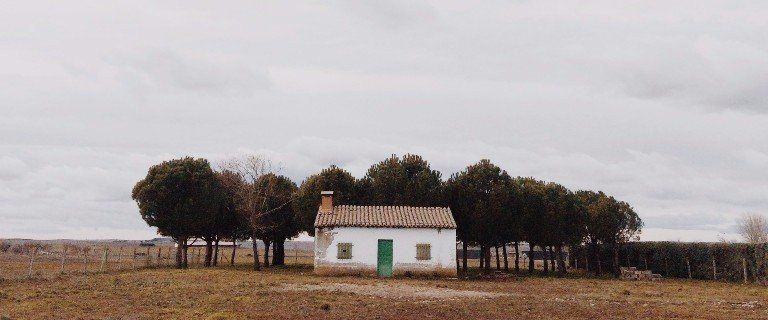
So this whole "recycling a house" thing. What's that all about?
We're certainly not the first people to do this. Longmont has a long history of people moving their houses. After Longmont was established, in 1871, most people in the neighboring town of Burlington moved their houses to Longmont. Today, there are several companies that move houses and buildings, so there's definitely demand.
Instead of moving a house to a vacant lot, we're moving it into our back yard and adding it onto our current house. The house moving company has already started preparing the house to be moved. We have to have it off it's current location by August 8th, but we haven't a set date yet, because we have to coordinate all this with the crane company, and with the City. The Planning Department told us they'd much rather see this old house reused, instead of being demolished.
Oh, the crane? Yeah, we're going to have a crane fly the house into our back yard. No, really. I'll be posting photos and, I hope, video of that.
So that's what we're doing. The house itself was given to us! But we still have to get it here, and then there's digging the basement, building the foundation, connecting utilities, and a few other, minor things. But even with the moving and construction costs, the cost per square foot is still less than half what new construction would cost us.
Keep in mind, we're doing this as DIY as possible. Not only does that save us money, it's a great family project, to boot. There are a few things we'll hire pros for, like the moving part. But the four of us, with whatever friends and family care to help out, will be doing, well, most of it.
We're certainly not the first people to do this. Longmont has a long history of people moving their houses. After Longmont was established, in 1871, most people in the neighboring town of Burlington moved their houses to Longmont. Today, there are several companies that move houses and buildings, so there's definitely demand.
Instead of moving a house to a vacant lot, we're moving it into our back yard and adding it onto our current house. The house moving company has already started preparing the house to be moved. We have to have it off it's current location by August 8th, but we haven't a set date yet, because we have to coordinate all this with the crane company, and with the City. The Planning Department told us they'd much rather see this old house reused, instead of being demolished.
Oh, the crane? Yeah, we're going to have a crane fly the house into our back yard. No, really. I'll be posting photos and, I hope, video of that.
So that's what we're doing. The house itself was given to us! But we still have to get it here, and then there's digging the basement, building the foundation, connecting utilities, and a few other, minor things. But even with the moving and construction costs, the cost per square foot is still less than half what new construction would cost us.
Keep in mind, we're doing this as DIY as possible. Not only does that save us money, it's a great family project, to boot. There are a few things we'll hire pros for, like the moving part. But the four of us, with whatever friends and family care to help out, will be doing, well, most of it.

